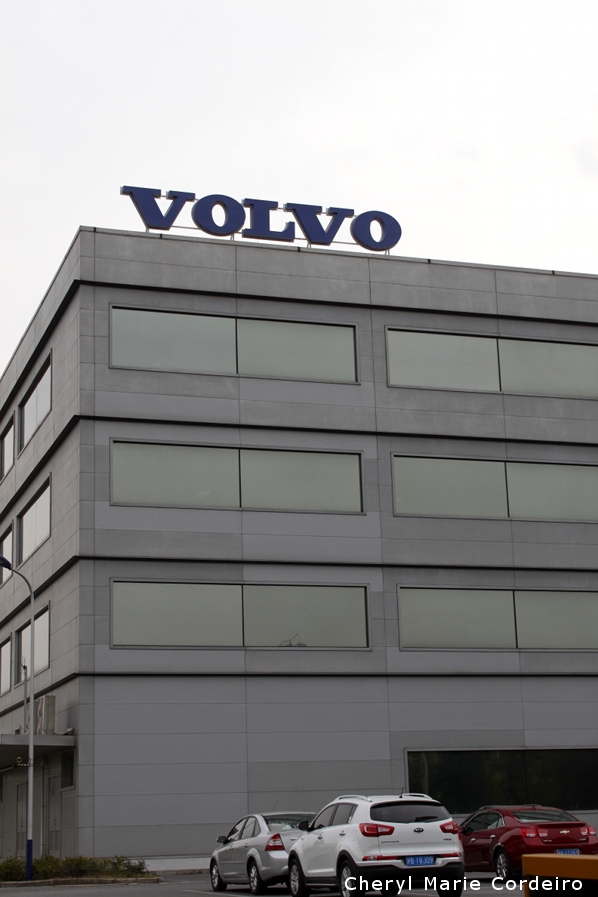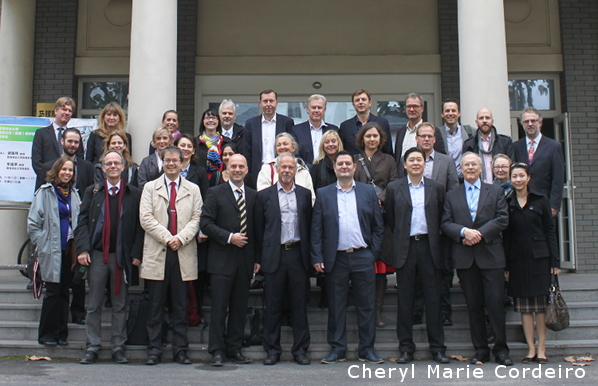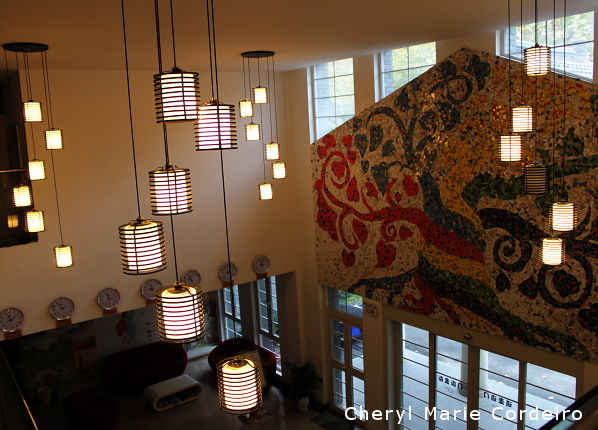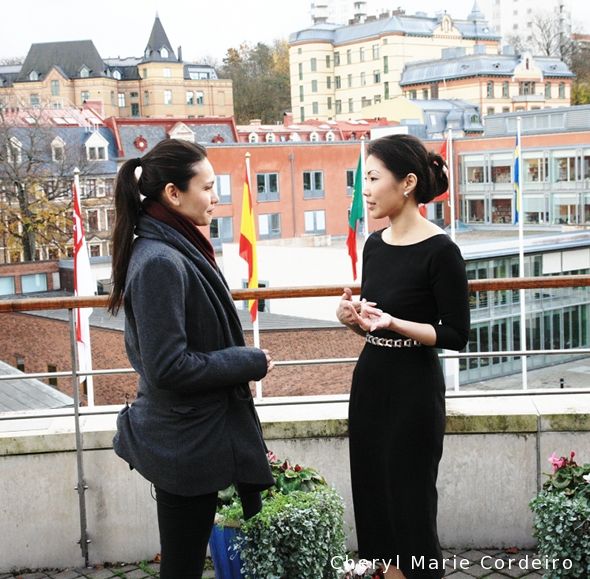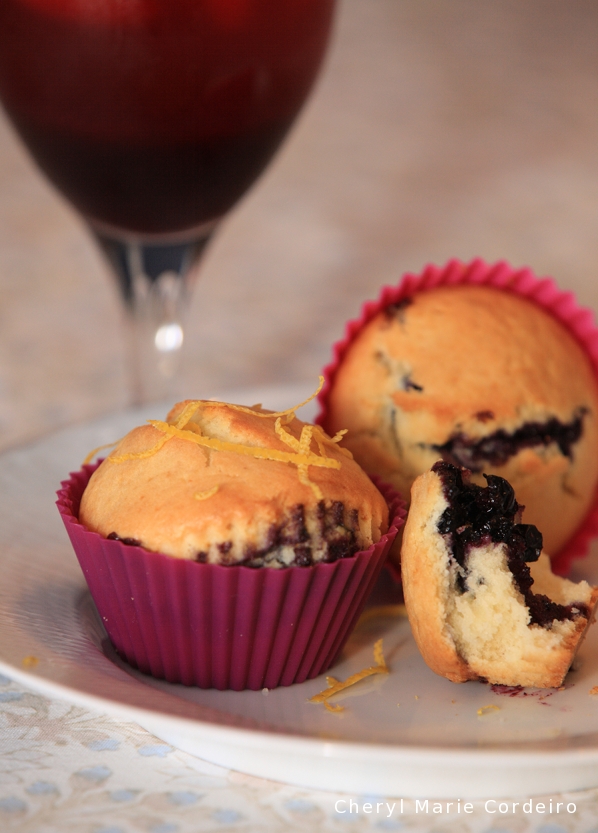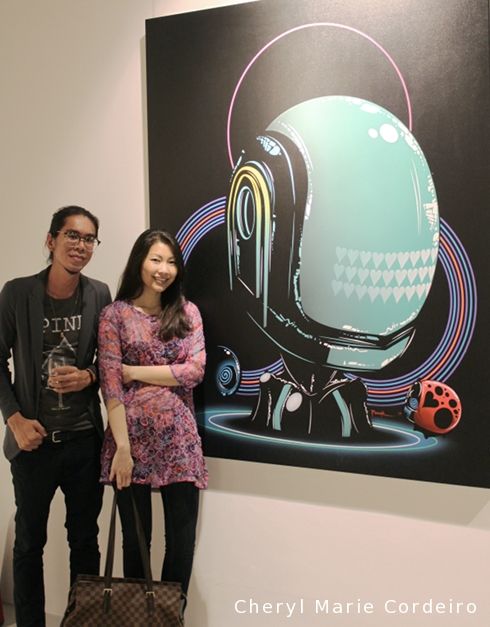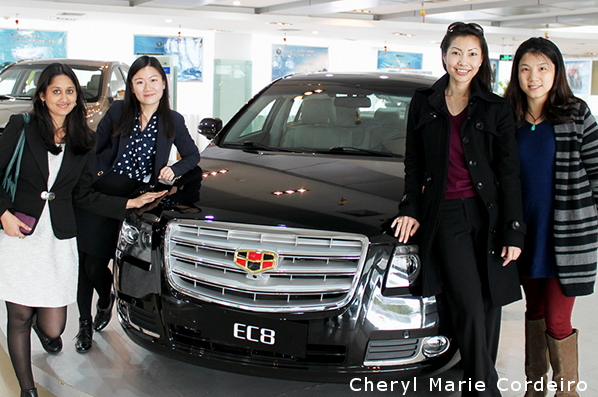
In China’s First Automobile Health and Development Summit held in Beijing in 2012, Geely’s Emgrand EC8 was nominated one of the Top 10 environmental friendly cars for 2012. (Globaltimes.cn April 2013).
From left to right Swati Ravi, Emily Xu, Cheryl Marie Cordeiro and Joyce Wu, PR Manager of Geely.
Text & Photo © JE Nilsson, CM Cordeiro 2013
Geely HQ and Cixi Assembly plant
Friday the 15th of November was the fifth day of our visit to Shanghai in 2013. We had focused quite some on the Chinese automobile industry and today it was time to meet with Geely. Both the Geely Cixi Assembly plant and the Geely Headquarters are located in Hangzhou, Zhejiang province, a few hours drive inland, from Shanghai.
